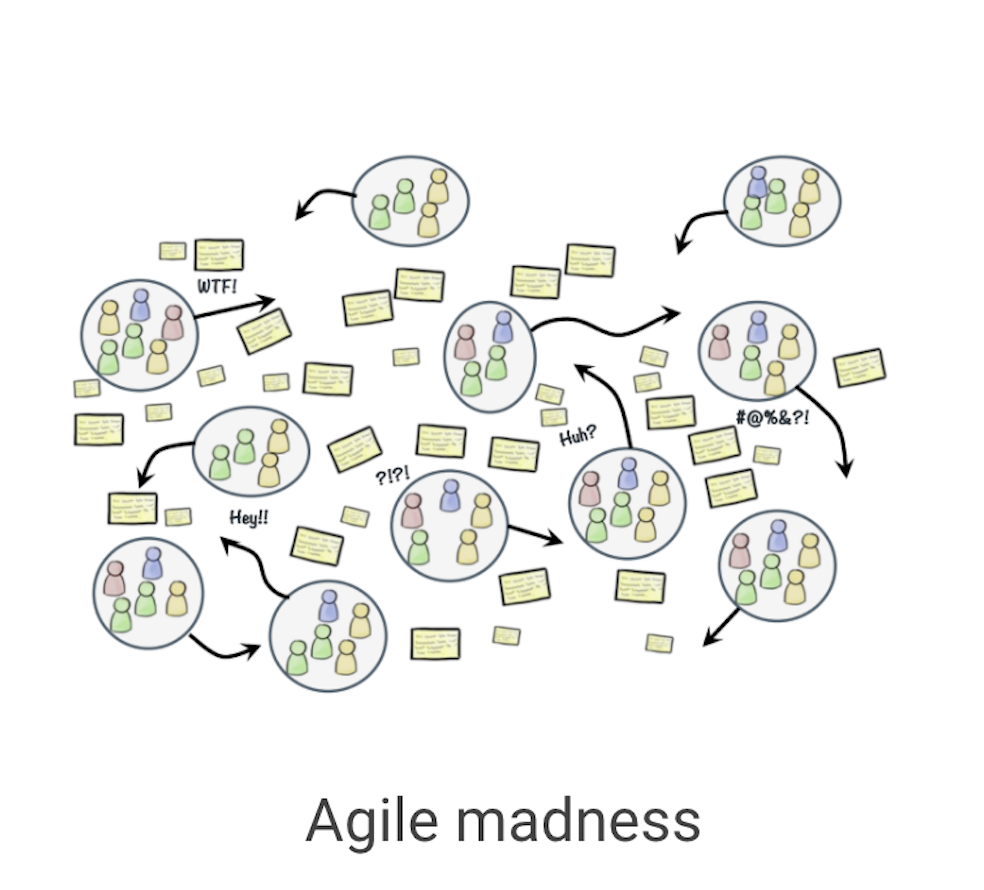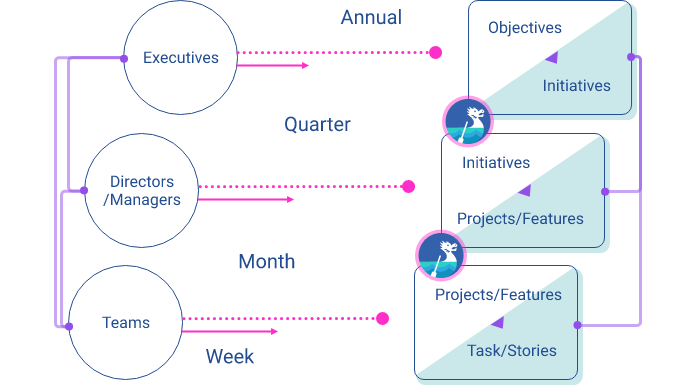An agile coach asked me recently – I’ve been hearing this Responsive Portfolio Management a lot lately. What is it? Why should agile organizations adopt responsive portfolio management?
Let’s take a step back to see how your organization adopted Agile in the first place? For most, it was about enabling rapid, iterative change in a world that was itself rapidly changing. Better productivity, faster delivery, and increased profitability for the benefit of employees and customers.
So why are we hearing stories of internal failures or subpar products? Of misaligned teams that, months earlier, had all agreed on a common set of goals. Why are Agile companies losing their agility?

The problem doesn’t lie in methodology but in what we call “Agile madness”. Siloed teams with competing priorities or circular dependencies cannot practice scrum effectively. Strategic and tactical leaders cannot make informed decisions without clarity and alignment. And when these companies scale, these problems scale too.
The traditional solution was to integrate project portfolio management to bridge strategy and execution. However, it’s a linear top down command and control type of framework that often risk stymying team innovation that the Agile methodology brings.
So, we updated it.
After managing more than 10 million hours of portfolio roadmaps from PayPal, Shutterfly, Bigcommerce and other fast-growing startups, and interviewing product and technology executives from leading innovative companies such as Netflix, Amazon and Shopify, we designed “Responsive PPM” to help companies of any size to achieve holistic responsiveness.
What is Responsive PPM?
Responsive PPM (Responsive Product Portfolio Management) replaces fixed-scope projects with a portfolio containing outcome-focused initiatives that connect with objectives and are iteratively built, tested, and learned from/ validated before the next iteration.
Additionally, responsive PPM for agile adds a bottom-up workflow that empowers teams and their leaders to make iterative and holistic decisions towards achieving their OKRs (Objectives and Key Results) — ones that align with long-term strategy and quarterly milestones.

In turn, executives can better adjust and reprioritize in response to the changes in execution, available resources, and external factors. Part of this lies in adopting MoAR (Metrics on Available Resources) over ROI as a more holistic evaluation tool. In most instances, looking beyond dollar-based costs and benefits can provide intuitive and immediately measurable values to plan with.
Importantly, this entire process is continuous regardless of organizational level. Executives, leaders, and teams must all assess and adjust for the next year, quarter, or week.
By tying the strategic and execution cycles to this rhythm of Align, Allocate, and Adjust, everyone moves in the right direction at the right speed. Rather than planning only once a year and blindly hoping everything works out in the end, Responsive PPM is the rallying drumbeat for an entire organization to move quickly and efficiently.
In other words, Responsive PPM lets Agile organizations regain their agility regardless of its size and scale.




